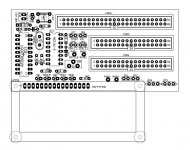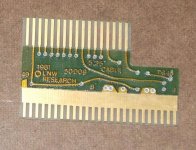The whole rationale behind the READY signal in the 8272/765 is that it's an 8" controller, where the drive spindles are always spinning. So READY really indicated that a disk was inserted in the drive. This was used by the "polling" mode of the FDC to periodically select each of 4 possible drives and generate an interrupt should the status change. To disable this, not only is READY tied active, but the 765 drive select outputs are no-connects, such that polling doesn't do anything.
So how does the PC determine that a drive isn't ready? Easy--by attaching a deadman timer to every operation. If an operation hasn't completed in about a second, the 765 can assumed to be hung, and a RESET signal is issued, and the FDC is respecified.
Note that the 5170 uses the 765/8272 but supports DISK CHANGED as well. This is done, like unit select and motor control, by external logic. Basically, a disk changed status is asserted by a drive when a disk is inserted or removed. The status is reset by moving the heads (a "step in" followed by a "step out" is sufficient). The treatment of the status is up to the drive software--usually in the case of 360K and 720K drives, it's ignored--and for 1.2M and 1.44M, it's treated as an error and passed up to the calling program.




